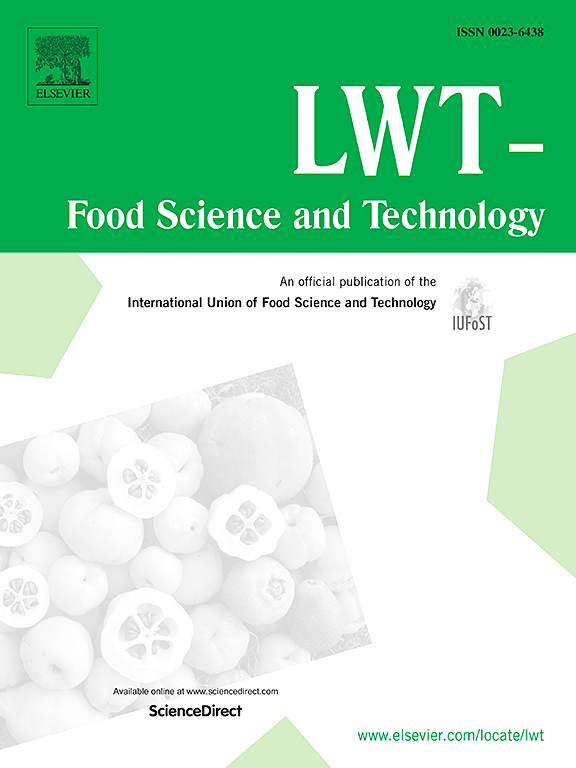A fast and highly efficient strategy for detection of camellia oil adulteration using machine learning assisted SERS
IF 6
1区 农林科学
Q1 FOOD SCIENCE & TECHNOLOGY
引用次数: 0
Abstract
Camellia oil (CAO) is a high-quality edible vegetable oil, commonly known as “Oriental olive oil," with medical value and biological activity, but easily adulterated. Currently, we developed a method that combines Surface Enhanced Raman Spectroscopy (SERS) with machine learning for the effective identification of camellia oil. SERS is essential in this context because it significantly enhances the sensitivity and specificity of the detection process, allowing for the identification of even minor adulterations that traditional methods may overlook. We employed SERS spectra of both pure and adulterated camellia oil on an NPAg sheet coated with 4-thiobenzonitrile (4MBN) at a concentration of 0.02% for the machine learning analysis. The utilization of 4MBN for signal generation within the Raman silent region further enhances the stability of spectral acquisition and ensures more accurate results. The k nearest neighbors (KNN) model exhibited superior performance, achieving a test set accuracy of 97.24%. Consequently, the NPAg sheet@[email protected]%ER strategy, designed to amplify compositional differences in edible oils, emerges as an effective tool for rapidly verifying the authenticity of such oils.
利用机器学习辅助 SERS 检测山茶油掺假的快速高效策略
山茶油(CAO)是一种优质食用植物油,俗称 "东方橄榄油",具有医疗价值和生物活性,但容易掺假。目前,我们开发了一种将表面增强拉曼光谱(SERS)与机器学习相结合的方法,用于有效识别山茶油。SERS 在这方面至关重要,因为它大大提高了检测过程的灵敏度和特异性,甚至可以识别出传统方法可能会忽略的细微掺假。我们在涂有浓度为 0.02% 的 4-硫代苯腈(4MBN)的 NPAg 片上使用纯山茶油和掺假山茶油的 SERS 光谱进行机器学习分析。利用 4MBN 在拉曼静默区内生成信号,可进一步提高光谱采集的稳定性,确保获得更准确的结果。k 近邻(KNN)模型表现出卓越的性能,测试集准确率达到 97.24%。因此,旨在放大食用油成分差异的 NPAg sheet@[email protected]%ER 策略成为了快速验证食用油真伪的有效工具。
本文章由计算机程序翻译,如有差异,请以英文原文为准。
求助全文
约1分钟内获得全文
求助全文
来源期刊

LWT - Food Science and Technology
工程技术-食品科技
CiteScore
11.80
自引率
6.70%
发文量
1724
审稿时长
65 days
期刊介绍:
LWT - Food Science and Technology is an international journal that publishes innovative papers in the fields of food chemistry, biochemistry, microbiology, technology and nutrition. The work described should be innovative either in the approach or in the methods used. The significance of the results either for the science community or for the food industry must also be specified. Contributions written in English are welcomed in the form of review articles, short reviews, research papers, and research notes. Papers featuring animal trials and cell cultures are outside the scope of the journal and will not be considered for publication.
 求助内容:
求助内容: 应助结果提醒方式:
应助结果提醒方式:


